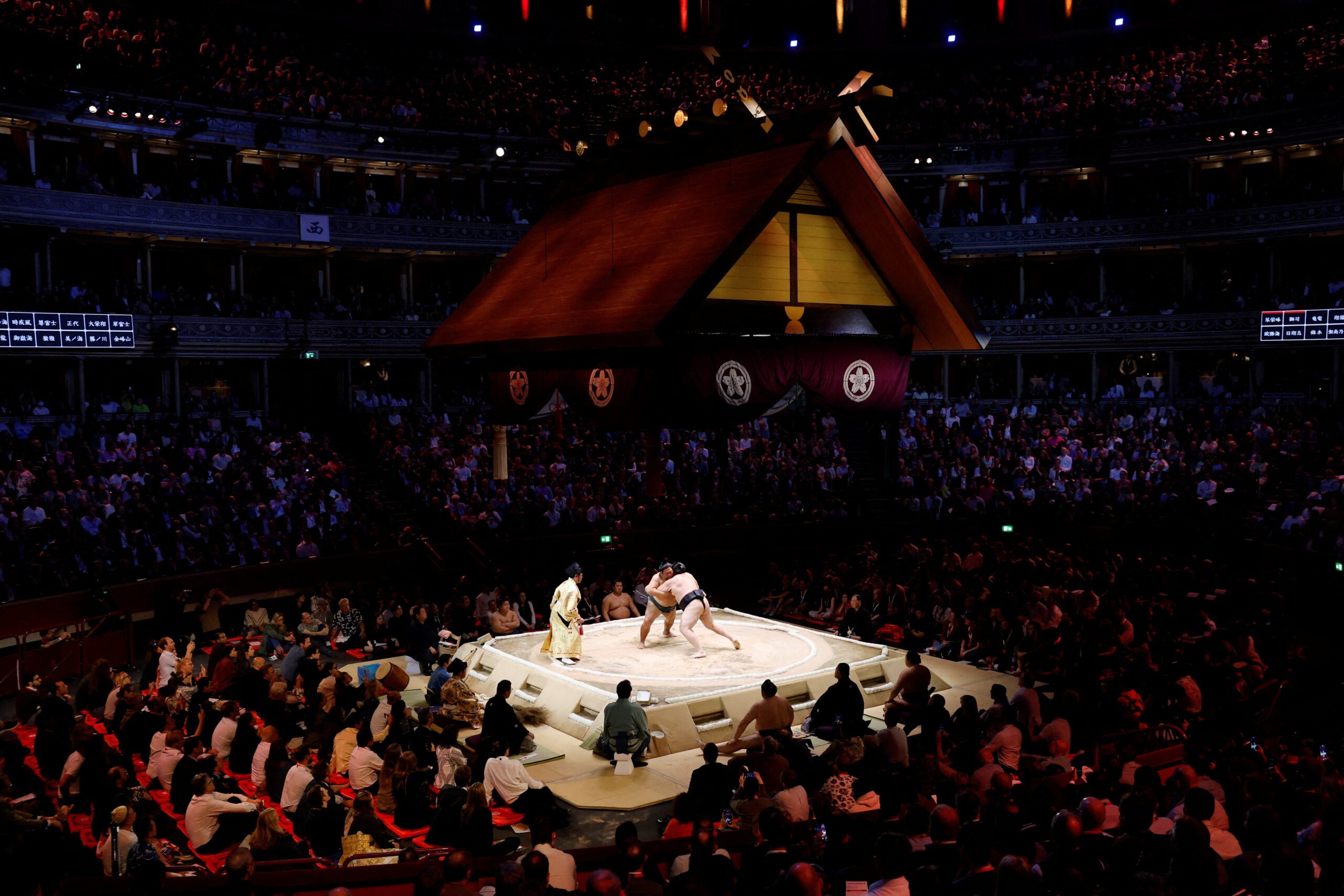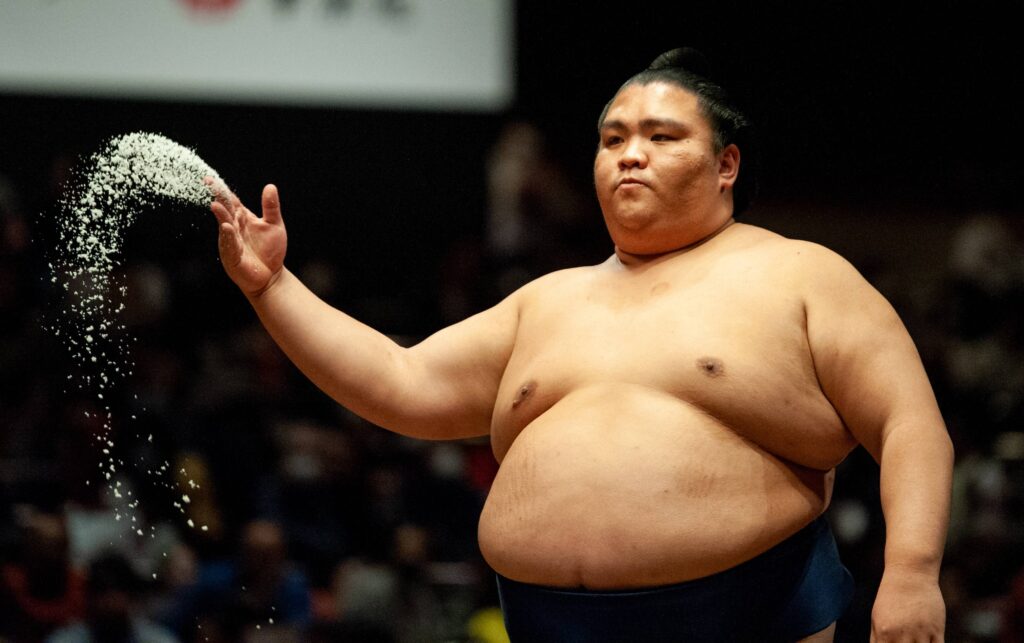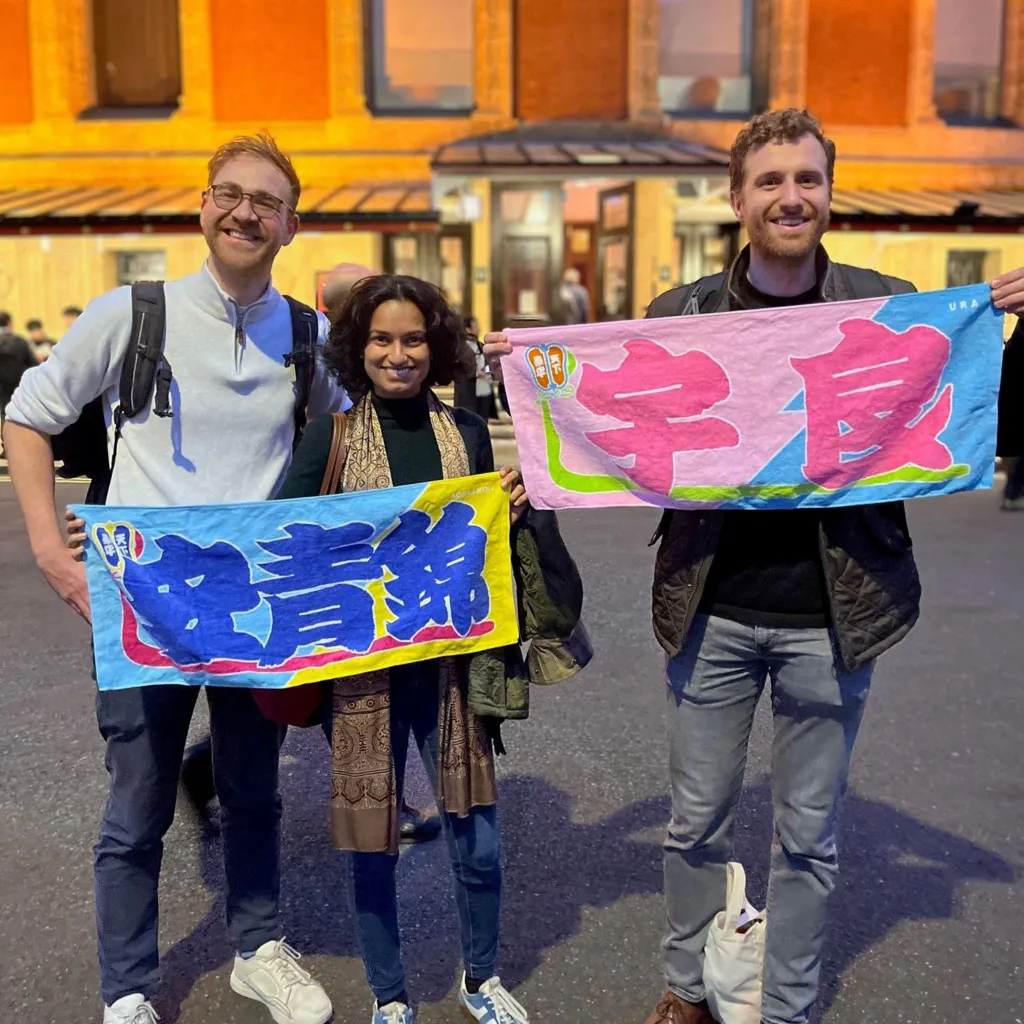Trending
Tradition Meets Tech: Grand Sumo Electrifies London’s Royal Albert Hall

In a rare fusion of ancient ritual and modern spectacle, London’s Royal Albert Hall transformed into a shrine of Japanese culture as 40 of the world’s top sumo wrestlers took center stage for the Grand Sumo Tournament 2025. Beneath a suspended temple roof and a glowing LED halo, the audience witnessed 45 minutes of pure ceremony before the first match even began proof that sumo’s timeless discipline can captivate even in the digital age.
A Sacred Sport Reimagined
Sumo’s origins stretch back over two millennia, yet its spirit remains intact. Wrestlers — or rikishi performed age-old gestures like shiko (leg stomping to banish evil spirits) and salt-throwing to purify the ring. Above them, a modern circular LED screen displayed stats and instant replays, bridging centuries of cultural evolution.
This five-day showcase, the first of its kind in London since 1991, recreated the energy of Japan’s grand basho tournaments inside the Victorian venue. Fans from across the UK and beyond gathered to witness a sport that blends spirituality, strength, and ceremony — a living link between Japan’s Shinto heritage and its global fandom.
From Japan to Reddit: How Sumo Went Global
For many attendees, their passion for sumo began online. Sian Spencer, a 35-year-old fan from the UK, stumbled upon a random YouTube clip two years ago. Soon, she was following sumo stables on social media and learning about chankonabe, the protein-rich stew that fuels the athletes’ massive frames. “Seeing it in real life felt like a once-in-a-lifetime dream,” she said.
Others, like Julia and Cezar from Edinburgh, discovered the sport during a trip to Japan. “It started as a tourist activity,” Julia recalled, “but it became an obsession.” With few Western outlets covering sumo, fans turned to Reddit, Telegram, and YouTube to build global communities of enthusiasts. “Outside of Japan,” Cezar explained, “the internet is the only way to be part of it.”
A Spectacle of Power and Ritual
Inside the hall, the crowd gasped at the intensity of the bouts. Each match, lasting mere seconds, pitted two rikishi in a contest of sheer strength and balance. There are no weight classes a 40kg difference between opponents is not uncommon, and when 180kg of wrestler collides with another, the echo shakes the floor.

Some fans got closer than expected. During one dramatic moment, both wrestlers tumbled off the platform into the front-row cushions, sending spectators scrambling but laughing. “It was incredible the speed, the impact, the atmosphere,” said Caspar Eliot, a London fan who secured front-row tickets after missing out during a Japan visit last year.
Behind the Ritual: Challenges for the Future
While the event was a triumph for sumo’s global appeal, the sport faces headwinds back home. Reports of bullying, sexism, and match-fixing scandals have shadowed its reputation, and recruitment among Japan’s youth has slowed to historic lows. With a shrinking population and strict limits on foreign wrestlers, some worry about the sport’s long-term sustainability.
Still, its international reach continues to grow. Mongolian athletes dominate the rankings, and new stars from Ukraine and Georgia are emerging a sign that sumo’s identity is evolving beyond Japan’s borders.
A Community Reborn in London
For fans like Megha Okhai, the event symbolized something bigger than sport. “It was like seeing my online world come to life,” she said. “All the Reddit discussions, all the memes — suddenly we were part of it, together.”

Dan Milne-Morey, Megha Okhai and Caspar Eliot with a few of their sumo towels – which represent their favourite rikishi
As the wrestlers bowed and the crowd roared, the centuries-old sport found a new home under London’s lights. Ancient ritual met modern fandom and, for five unforgettable days, sumo belonged to the world.








